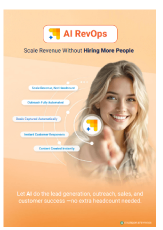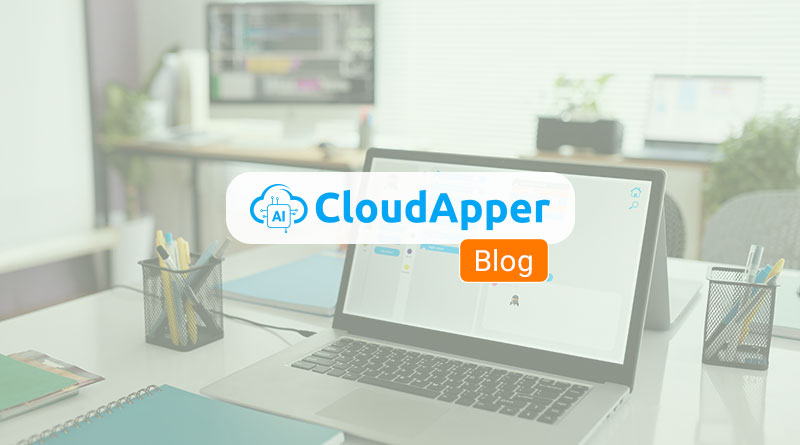Businesses lose up to 20% of new clients due to slow onboarding. AI changes the game by slashing delays, offering automated customer onboarding and issue resolution. This approach allows teams to focus on building strong relationships, boosting efficiency, and keeping clients happy, driving growth and satisfaction.
TL;DR
- Businesses lose up to 20% of new clients due to slow onboarding, but AI can drastically reduce these delays.
- Automated customer onboarding and issue resolution streamline processes, cutting down on human error and operating 24/7.
- AI tools like chatbots and intelligent ticketing systems ensure quick issue fixes, improving client satisfaction and reducing churn.
- Implementing AI reduces costs, enhances efficiency, and provides valuable data insights for continuous improvement.
- Real-life examples show AI reducing onboarding times and improving customer reviews significantly.
- Future trends in AI include voice recognition and predictive analytics, promising even smarter customer support solutions.
- Avoid common pitfalls by training your team and balancing AI with human oversight for complex issues.
Embrace AI for onboarding and support to gain a competitive edge and drive growth. Contact us to learn more about transforming your customer support with AI.
Table of Contents
Did you know that businesses lose up to 20% of new clients due to slow onboarding? That statistic hits hard in the fast-paced world of customer support. However, AI steps in to change the game by slashing those delays. For companies tired of long waits and frustrated customers, automated customer onboarding and issue resolution offers a fresh path forward. This approach uses smart tech to handle setups and fixes quickly. Therefore, teams can focus on what matters most: building strong relationships. In this piece, we dive into how AI cuts support delays, boosts efficiency, and keeps clients happy. We will explore real strategies, benefits, and tips to get started. For example, imagine turning days of waiting into minutes of action. That shift not only saves time but also drives growth.
For more information on CloudApper AI RevOps visit our page here.
What Is Automated Customer Onboarding and Issue Resolution?
Automated customer onboarding and issue resolution means using AI tools to streamline the start of customer journeys and fix problems fast. These systems take over repetitive tasks that humans once handled. For instance, when a new user signs up, AI guides them through setup without needing a live agent. Similarly, for issues like technical glitches, the tech identifies, categorizes, and resolves them automatically. This method cuts down on human error and speeds things up. Moreover, it operates around the clock, so support never sleeps. Businesses in tech, e-commerce, and services love this because it reduces churn. In fact, companies adopting AI see quicker resolutions and happier clients. Therefore, understanding this concept is key for any team aiming to modernize support.
Why Do Support Delays Hurt Businesses So Much?
Support delays create big headaches for companies. Customers expect fast help, but traditional methods often fall short. For example, manual onboarding can drag on for days, leading to frustration and drop-offs. Issue fixes might involve endless emails or calls, wasting everyone’s time. These slowdowns cost money too. Research shows that poor support leads to 50% higher churn rates. Additionally, delayed resolutions damage trust, making clients look elsewhere. However, AI flips this script by automating processes. It ensures quick starts and rapid fixes, keeping satisfaction high. Therefore, tackling delays head-on with tech is essential for staying competitive.
How Can AI Speed Up Customer Onboarding?
AI speeds up customer onboarding by handling the heavy lifting automatically. Tools analyze user data right away and provide tailored steps. For instance, when someone joins a platform, AI sends personalized guides via chat or app. This eliminates wait times for human help. Moreover, it uses natural language processing to answer questions instantly. Say a user asks about integrating software; AI responds with clear instructions. As a result, onboarding shrinks from weeks to hours. Businesses benefit from this efficiency, onboarding more clients without extra staff. For example, a SaaS company might use AI to set up accounts based on industry needs. Therefore, this automation not only saves time but also boosts user confidence from the start.
What Are the Best AI Tools for Quick Issue Fixes?
Several AI tools excel at quick issue fixes in customer support. Popular ones include chatbots and intelligent ticketing systems. These tools scan incoming problems and assign them smartly. For example, if a user reports a bug, AI categorizes it and suggests solutions from a knowledge base. High-priority issues get escalated to experts, while simple ones resolve on the spot. However, the real power comes from machine learning, which improves over time by studying past cases. Tools like these integrate with existing systems, making adoption easy. Additionally, they handle multiple channels, from email to social media. Therefore, choosing the right tool depends on your business size and needs, but all aim to cut delays significantly.
Benefits of Using AI for Onboarding and Support
Using AI for onboarding and support brings tons of benefits. First, it reduces costs by minimizing the need for large support teams. Automated systems handle routine tasks, freeing humans for complex issues. For example, companies report 30% lower operational expenses after implementing AI. Moreover, client satisfaction skyrockets with faster responses. Quick onboarding means users get value sooner, leading to better retention. Issue resolutions in minutes build loyalty too. However, the gains go beyond that. AI provides data insights, helping teams spot trends and improve services. Therefore, overall efficiency rises, and revenue grows as happy clients stick around and refer others.
Real-Life Examples of AI Cutting Support Delays
Real-life examples show AI’s impact clearly. Take a mid-sized tech firm that struggled with onboarding delays. They integrated an AI system, and suddenly, new clients completed setups in under an hour. This change dropped their churn rate by 15%. Another case involves an e-commerce platform facing ticket backlogs. AI automated resolutions for 60% of issues, slashing wait times from hours to minutes. As a result, customer reviews improved dramatically. For example, one client praised the instant fixes during peak hours. However, these successes require proper setup. Businesses must train AI on their specific data for best results. Therefore, learning from these stories can guide your own implementation.
How to Implement AI for Automated Customer Onboarding
Implementing AI for automated customer onboarding starts with assessing your current process. Identify bottlenecks, like slow verifications or confusing guides. Then, select a tool that fits your tech stack. For instance, integrate it with your CRM for seamless data flow. Train your team on using AI insights, so they complement the tech. Moreover, test the system with a small group before full rollout. This ensures smooth adoption. However, monitor key metrics like completion rates and feedback. Adjust as needed to optimize. Therefore, a step-by-step approach makes implementation straightforward and effective.
Tips for Faster Issue Resolution with AI
For faster issue resolution with AI, follow these tips. First, build a robust knowledge base that AI can draw from. This includes FAQs and past solutions. Next, use predictive analytics to spot problems before they escalate. For example, AI might flag unusual patterns and alert teams. Additionally, ensure multi-language support for global clients. However, keep human oversight for tricky cases. Combine AI with agent expertise for the best outcomes. Moreover, regularly update the system with new data to maintain accuracy. Therefore, these strategies maximize speed and reliability in fixes.
Future Trends in AI for Customer Support
Future trends in AI for customer support point to even smarter systems. Voice recognition will allow hands-free interactions, making onboarding effortless. Predictive AI will foresee issues and prevent them. For example, it might suggest updates before a glitch hits. Moreover, integration with AR could provide visual guides for setups. However, ethics and data privacy will shape these advancements. Businesses must prioritize secure AI to build trust. Therefore, staying ahead of trends ensures your support remains cutting-edge.
Common Mistakes to Avoid When Adopting AI
When adopting AI, avoid common mistakes. Do not skip training your team; they need to understand the tool. For instance, rushing implementation without tests leads to errors. Additionally, ignoring user feedback can miss improvement opportunities. However, over-relying on AI without human backup risks mishandling complex issues. Balance is key. Therefore, plan carefully to sidestep these pitfalls and reap full benefits.
Measuring Success in AI-Driven Support
Measuring success in AI-driven support involves tracking key metrics. Look at resolution times, satisfaction scores, and churn rates. For example, aim for under-30-minute fixes. Use analytics to see how AI handles volumes. However, compare before-and-after data for clear insights. This shows ROI. Therefore, regular reviews keep your strategy on track.
Why Choose AI for Long-Term Growth?
Choosing AI for long-term growth makes sense in today’s market. It scales with your business, handling more clients without proportional costs. For example, as demand grows, AI adapts seamlessly. Moreover, it fosters innovation, letting teams focus on strategy. However, the core win is delighted customers who become advocates. Therefore, investing in automated customer onboarding and issue resolution positions your company for sustained success.
In wrapping up, AI transforms support by eliminating delays and enhancing experiences. Businesses that embrace it gain an edge, with faster onboarding and quick fixes driving loyalty and revenue. So, take the leap and watch your support soar.

Scale Revenue. No Extra Hires
AI Agents that find prospects, nurture leads, engage visitors,
close deals & support customers - automatically
How-To Guide for Implementing AI for Customer Support
Step 1: Assess Your Current Process
Begin by identifying current bottlenecks in your onboarding and support processes, such as verification delays or complex procedures.
Step 2: Select the Right AI Tool
Choose an AI solution that integrates seamlessly with your existing tech stack, such as CloudApper's AI CSR Agent.
Step 3: Train Your Team
Ensure that your team is well-versed in using the AI tools to interpret insights and complement the automated processes.
Step 4: Implement and Test the System
Roll out the AI tool to a small group initially, monitoring key metrics to ensure effectiveness before wider deployment.
Step 5: Monitor and Optimize
Monitor the completion rates and user feedback after implementation. Adjust the system based on this feedback to optimize performance continually.
For additional insights on scaling your support operations with AI, see AI-Powered Revenue Operations.

Scale Revenue Without Hiring More People
Meet the AI Team Behind Your Revenue Growth
CloudApper’s AI Revenue Operations Team helps you scale without the cost and complexity of hiring.
Learn more | Download BrochureFrequently Asked Questions
What is automated customer onboarding and issue resolution?
Automated customer onboarding and issue resolution involve the use of AI to streamline the initiation of customer engagement and speedy problem-solving. For more information, visit our article on Maximize Customer Success with Automated Feedback & Onboarding.
How does AI cut support delays?
AI reduces support delays by taking over repetitive tasks, enabling faster response times and minimizing human error. Learn more about this on our page Unlock Rapid Support with AI Chatbot Powered CSR Automation.
What are the benefits of using AI for onboarding and support?
Utilizing AI for onboarding and support results in reduced costs, enhanced customer satisfaction, and quicker response times. For detailed benefits, see Why Every Growing Business Needs Automated Support Solutions.
Which AI tools are best for quick issue fixes?
Popular AI tools include chatbots and intelligent ticketing systems that streamline problem resolution and enhance operational efficiency.
What future trends should we expect in AI for customer support?
Future trends in AI for customer support include advanced voice recognition, predictive analytics, and integration with augmented reality. See more about these trends in How AI Integration in Revenue Operations Boosts Efficiency and Growth.
What is CloudApper AI Platform?
CloudApper AI is an advanced platform that enables organizations to integrate AI into their existing enterprise systems effortlessly, without the need for technical expertise, costly development, or upgrading the underlying infrastructure. By transforming legacy systems into AI-capable solutions, CloudApper allows companies to harness the power of Generative AI quickly and efficiently. This approach has been successfully implemented with leading systems like UKG, Workday, Oracle, Paradox, Amazon AWS Bedrock and can be applied across various industries, helping businesses enhance productivity, automate processes, and gain deeper insights without the usual complexities. With CloudApper AI, you can start experiencing the transformative benefits of AI today. Learn More
AI RevOps Agent
Scale Revenue Without Hiring More People
Download Brochure


Amplifier Agent
Keeps Your Brand Visible With Articles & Social Media Content That Connects.
Learn More
Outreach Agent
Launches Email & SMS Campaigns That Reach Out on Time and Actually Convert.
Learn More


- Works with
Similar Posts

Automate Email Scheduling and Lead Nurturing to Shorten B2B SaaS…

Strengthen SaaS Deal Flow via Automated Email and SMS Tactics

















